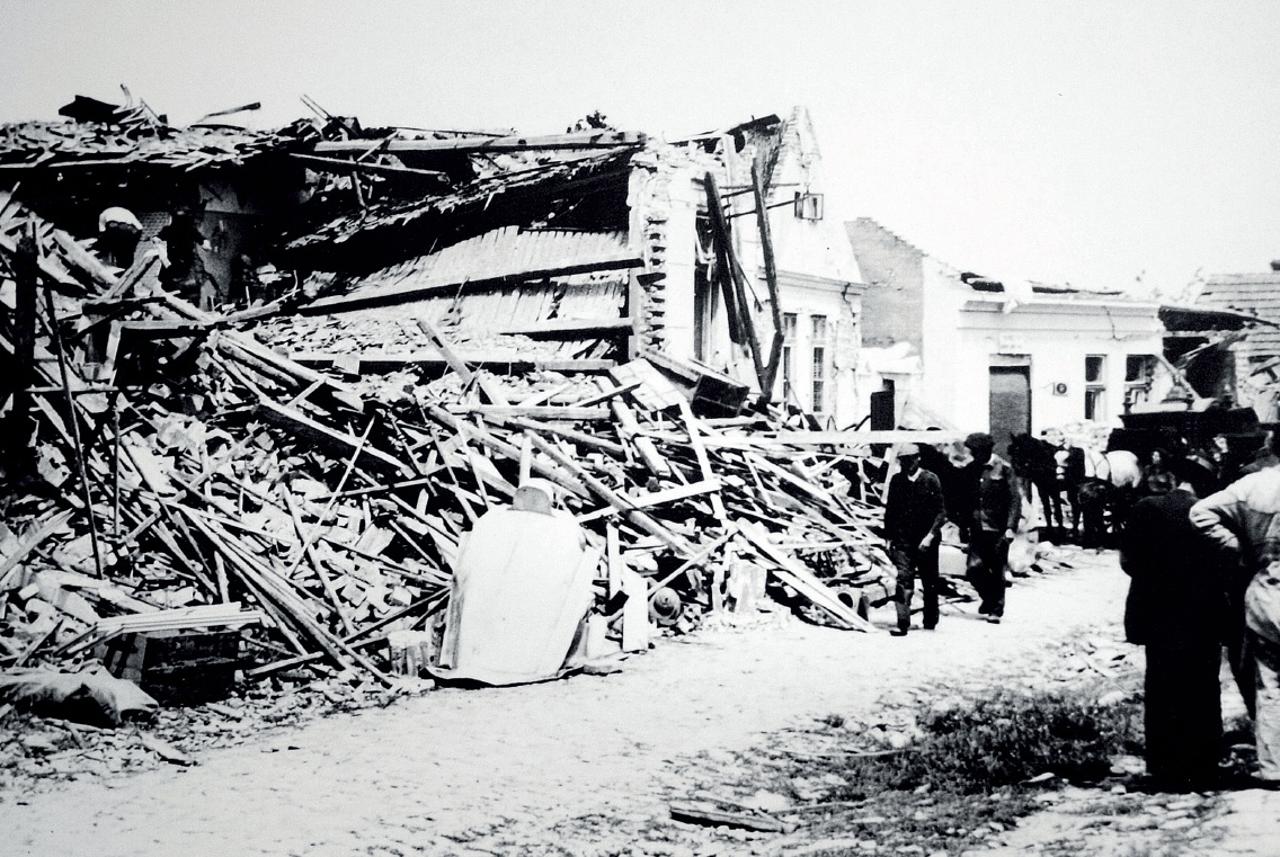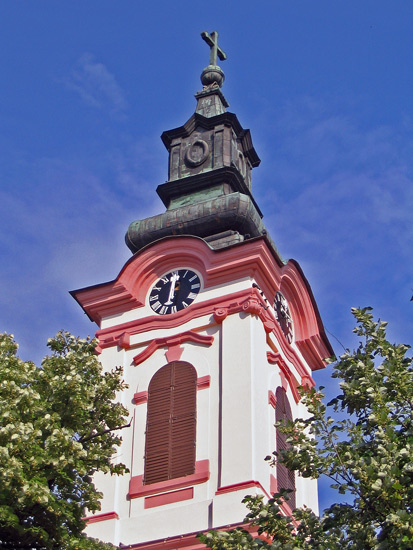|
Rodoljub Marjanović
Rodoljub "Rođa" Marjanović (; born 27 January 1988) is a Serbian professional footballer who plays as a forward. He also holds Croatian citizenship. Despite his talent, Marjanović never managed to reach his full potential due to the lack of professionalism. He is, however, probably best known for being recognized by FIFPro's ''Black Book Eastern Europe'' after allegedly being threatened with death for asking the Football Association of Serbia (FSS) to take action for unpaid salaries during a loan spell at Hajduk Kula. Early life Born in Osijek (in present-day Croatia), Marjanović spent the majority of his childhood in nearby Beli Manastir. He moved to Sombor (in present-day Vojvodina, an autonomous province of Serbia) with his family in 1997, subsequently joining the youth ranks of local club Radnički. He also played for Mladost Apatin and Partizan at youth level. Club career While completing his formation at Rad, Marjanović made his senior debut in the seco ... [...More Info...] [...Related Items...] OR: [Wikipedia] [Google] [Baidu] |
Osijek
Osijek () is the fourth-largest city in Croatia, with a population of 96,848 in 2021. It is the largest city and the economic and cultural centre of the eastern Croatian region of Slavonia, as well as the administrative centre of Osijek-Baranja County. Osijek is on the right bank of the Drava River, upstream of its confluence with the Danube, at an elevation of . Name The name was given to the city due to its position on elevated ground, which prevented the city being flooded by the local swamp waters. Its name ''Osijek'' derives from the Croatian word ''oseka'' ' ebb tide'. Due to its history within the Habsburg monarchy and briefly in the Ottoman Empire, as well as the presence of German, Hungarian, and Serbian minorities throughout its history, Osijek has (or had) its names in other languages: Hungarian: ''Eszék'', German: , or , , and English: ''Esgek''. Its Roman name was ''Aelia Mursa'', ''Mursa'', and later ''Mursa Major'', which may be a form of the pre-existing na ... [...More Info...] [...Related Items...] OR: [Wikipedia] [Google] [Baidu] |
Serbs Of Croatia
The Serbs of Croatia ( sh-Cyrl-Latn, separator=" / ", Срби у Хрватској, Srbi u Hrvatskoj) or Croatian Serbs ( sh-Cyrl-Latn, separator=" / ", Хрватски Срби, Hrvatski Srbi) constitute the largest national minority in Croatia. The community is predominantly Eastern Orthodoxy in Croatia, Eastern Orthodox Christian by religion, as opposed to the Croats who are Catholic Church in Croatia, Catholic. In some regions of modern-day Croatia, mainly in southern Dalmatia, ethnic Serbs possibly have been present from the Early Middle Ages. Serbs from modern-day Serbia and Serbs of Bosnia and Herzegovina, Bosnia-Herzegovina started actively migrating to Croatia at a time when the Habsburg monarchy was engaged in a series of wars against the Ottoman Empire. Great Migrations of the Serbs, Several migration waves happened after 1538, when the Emperor Ferdinand I granted them the right to settle on the territory of the Military Frontier. In exchange for land and exempti ... [...More Info...] [...Related Items...] OR: [Wikipedia] [Google] [Baidu] |
Liga II
The Liga 2, most commonly spelled as Liga II, is the second level of the Romanian football league system. The league changed its name from Divizia B just before the start of the 2006–07 Liga II, 2006–07 football season. It is currently Sponsor (commercial), sponsored by Casa Pariurilor, a betting company under the official name Liga 2 Casa Pariurilor. Format Since its inception in 1934, Liga II has had between 2 and 9 parallel divisions, with clubs divided based on geographic regions. But since the 2016–17 Liga II, 2016-17 Liga II, it changed to one group of 20 teams. Currently, the top six teams goes in the promotion play-off, in which the top 2 teams get promoted and the next 2 play a promotion play-off against teams from Liga I. In the play-out, there are 2 groups, 7th, 10th, 11th, etc. in group 1, 8th, 9th, 12th, etc. in group 2. the bottom 2 teams from each group gets relegated and the 3rd worst places in the 2 groups play each other home and away to decide the last tea ... [...More Info...] [...Related Items...] OR: [Wikipedia] [Google] [Baidu] |
2009–10 Serbian SuperLiga
The 2009–10 Serbian SuperLiga (known as the Jelen SuperLiga for sponsorship reasons) is the fourth season of the SuperLiga since its establishment in 2006. It began on 15 August 2009 and ended on 16 May 2010. A total of sixteen teams contested the league, with Partizan the defending champions. Changes from the 2008–09 season Structure changes The league size was expanded from twelve teams to sixteen prior to this season. As a consequence, the number of matches for each team was reduced from 33 to 30. Team changes Due to the league expansion, only 12th-placed Banat Zrenjanin were relegated to the First League. They were replaced by the 2008–09 First League champions BSK Borča. The other four teams achieving promotion were (in order of their finish) FK Smederevo, Mladi Radnik, Spartak Zlatibor Voda and Metalac Gornji Milanovac. Stadia League table Results Top goalscorers ''Including matches played on 16 May 2010; SourcesSuperliga official website [...More Info...] [...Related Items...] OR: [Wikipedia] [Google] [Baidu] |
2009–10 Serbian First League ...
The Serbian First Football League (Serbian: Prva liga Srbije) is the second-highest football league in Serbia. The league is operated by the Serbian FA. 18 teams will compete in this league for the 2009-10 season. Two teams will be promoted to the Serbian Superliga and four will be relegated to the Serbian League, the third-highest division overall in the Serbian football league system. League table Results See also * List of football clubs in Serbia * Serbian First League * Serbian League {{DEFAULTSORT:2009-10 Serbian First League Serbian First League seasons 2009–10 in Serbian football leagues Serbia , image_flag = Flag of Serbia.svg , national_motto = , image_coat = Coat of arms of Serbia.svg , national_anthem = () , image_map = , map_caption = Location of Serbia (gree ... [...More Info...] [...Related Items...] OR: [Wikipedia] [Google] [Baidu] |
Serbia
, image_flag = Flag of Serbia.svg , national_motto = , image_coat = Coat of arms of Serbia.svg , national_anthem = () , image_map = , map_caption = Location of Serbia (green) and the claimed but uncontrolled territory of Kosovo (light green) in Europe (dark grey) , image_map2 = , capital = Belgrade , coordinates = , largest_city = capital , official_languages = Serbian language, Serbian , ethnic_groups = , ethnic_groups_year = 2022 , religion = , religion_year = 2022 , demonym = Serbs, Serbian , government_type = Unitary parliamentary republic , leader_title1 = President of Serbia, President , leader_name1 = Aleksandar Vučić , leader_title2 = Prime Minister of Serbia, Prime Minister , leader_name2 = Đuro Macut , leader_title3 = Pres ... [...More Info...] [...Related Items...] OR: [Wikipedia] [Google] [Baidu] |
Vojvodina
Vojvodina ( ; sr-Cyrl, Војводина, ), officially the Autonomous Province of Vojvodina, is an Autonomous administrative division, autonomous province that occupies the northernmost part of Serbia, located in Central Europe. It lies within the Pannonian Basin, bordered to the south by the national capital Belgrade and the Sava and Danube Rivers. The administrative centre, Novi Sad, is the second-largest city in Serbia. The historic regions of Banat, Bačka, Syrmia and northernmost part of Mačva overlap the province. Modern Vojvodina is multi-ethnic and multi-cultural, with some 26 ethnic groups and six official languages. Fewer than two million people, nearly 27% of Serbia's population, live in the province. Name ''Vojvodina'' is also the Serbian word for voivodeship, a type of duchy overseen by a voivode. The Voivodeship of Serbia and Banat of Temeschwar, Serbian Voivodeship, a precursor to modern Vojvodina, was an Austrian province from 1849 to 1860. Its official name ... [...More Info...] [...Related Items...] OR: [Wikipedia] [Google] [Baidu] |
Sombor
Sombor ( sr-Cyrl, Сомбор, ; ; ) is a List of cities in Serbia, city and the administrative center of the West Bačka District in the autonomous province of Vojvodina, Serbia. The city has a total population of 41,814 (), while its administrative area (including neighboring villages) has 70,818 inhabitants. Name and etymology In Serbian language, Serbian, the city is known as ''Sombor'' (Сомбор), in Hungarian language, Hungarian as ''Zombor'', in Pannonian Rusyn language, Rusyn as ''Zombor'' (Зомбор). The older Hungarian name for the city was ''Czoborszentmihály''. The name originates from the Czobor family, who were the owners of this area in the 14th century. (The family name came from the Slavic name ''Cibor''.) The Serbian language, Serbian name for the city ''(Sombor)'' also came from the family name Czobor, and was first recorded in 1543, although the city was mentioned in historical documents under several more names, such as ''Samobor, Sambor, Sambir, ... [...More Info...] [...Related Items...] OR: [Wikipedia] [Google] [Baidu] |
Beli Manastir
Beli Manastir ( sr-Cyrl, Бели Манастир, ) is a town in eastern Croatia. It is the principal town of the Croatian part of Baranja, located in the Osijek-Baranja County. Name The name means "white monastery" in Serbo-Croatian. Originally called Monoštor, the current name was adopted in 1923. It is also known as ''Pélmonostor'' in Hungarian, and ''Manoster'' in German. The name Beli Manastir was first mentioned in 1227, when Moys de Daro, Hungarian Palatine, built a monastery on his estate in Pelu. Other names formerly used for the town were: ''Pél'', ''Bell'', and ''Monostor''. All names are connected with monasteries that existed in history at this location. The first monastery was built in the 9th century during the rule of Slavic duke Kocelj but was later razed, and all that remained of it was ''pil'' (''obelisk'' in English), hence the later Hungarian name ''Pél'', which was a version of the Slavic word. History In the 9th century, this area was part o ... [...More Info...] [...Related Items...] OR: [Wikipedia] [Google] [Baidu] |
Croatia
Croatia, officially the Republic of Croatia, is a country in Central Europe, Central and Southeast Europe, on the coast of the Adriatic Sea. It borders Slovenia to the northwest, Hungary to the northeast, Serbia to the east, Bosnia and Herzegovina and Montenegro to the southeast, and shares a maritime border with Italy to the west. Its capital and largest city, Zagreb, forms one of the country's Administrative divisions of Croatia, primary subdivisions, with Counties of Croatia, twenty counties. Other major urban centers include Split, Croatia, Split, Rijeka and Osijek. The country spans , and has a population of nearly 3.9 million. The Croats arrived in modern-day Croatia, then part of Illyria, Roman Illyria, in the late 6th century. By the 7th century, they had organized the territory into Duchy of Croatia, two duchies. Croatia was first internationally recognized as independent on 7 June 879 during the reign of Duke Branimir of Croatia, Branimir. Tomislav of Croatia, Tomis ... [...More Info...] [...Related Items...] OR: [Wikipedia] [Google] [Baidu] |
Football Association Of Serbia
The Football Association of Serbia () is the governing body of football in Serbia, based in Belgrade. It organizes Serbian football leagues, namely the Serbian Superliga, the Serbia national football team, as well as the Second Leagues. FSS was part of the Football Association of Yugoslavia, which was founded in April 13, 1919 in Zagreb then the new Football Association of Serbia and Montenegro in 2003. It was established as Football Association of Serbia in 2006 after the split of Montenegro and Serbia as two different independent countries. Javier Clemente was appointed the first coach of the Serbia national football team. The current head coach is Dragan Stojković. Symbols After receiving 150 proposals, in December 2006, the commission has decided to accept solution submitted by the Belgrade architect Nikola Vujisić. Next to new Serbian Army symbols, Serbian Football Association has revived the smallest element of the Serbian Coat of arms. The white cross and 4 fires ... [...More Info...] [...Related Items...] OR: [Wikipedia] [Google] [Baidu] |



